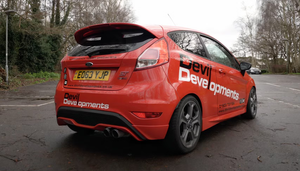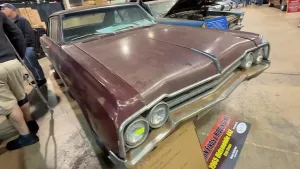Arnold Schwarzenegger’s 1977 Excalibur is back in the spotlight—fully restored, period-correct, and once again turning heads. Recently featured on CNN, the car looks like a slice of 1930s European motoring glamor dropped straight into 2025. It blends the silhouette of a pre-war Mercedes-Benz SSK with unmistakable American proportions, making it one of those rare neo-classics you simply can’t ignore.
In an era where celebrity garages are filled with EV hypercars, seven-figure exotics, and the latest tech-heavy performance machines, Schwarzenegger’s Excalibur makes a completely different kind of statement. It’s not about speed or records—it's about style, nostalgia, and presence. It belongs outside a theater or opera house at night, not lapping a racetrack.
The car was restored by West Coast Customs, a shop Schwarzenegger has worked with for years. But this wasn’t just another celebrity restoration. The reveal took place at the West Coast Customs Academy and was part of a larger initiative providing vocational training and second-chance career opportunities for formerly incarcerated individuals. That layer of purpose is part of what makes this story resonate beyond car culture—the restoration wasn’t just cosmetic, it was educational and transformative for the people involved.
Although the Excalibur looks like a 1930s Mercedes, it’s not a replica or a retrofit of a European platform. It was built in Milwaukee by Excalibur Motor Cars using American mechanicals. The styling is heavily inspired by the 1928–1932 Mercedes-Benz SSK and the 1934 Mercedes-Benz 500K, but the car itself is a standalone American creation. Only around 1,141 Series III models were built (some sources list 1,185), and of those, only 76 were Roadsters like Schwarzenegger’s. One detail fans appreciate: Arnold drives his with a manual transmission.
Under the long hood, most 1977 Series III models used Chevrolet’s 350-cubic-inch small-block V8, producing about 300 horsepower at the time. Some versions were equipped with the 454 big-block, though with less power on paper. Power was usually sent through a Turbo-Hydramatic automatic transmission, but a few, including this one, came with a manual gearbox. The reinforced Chevrolet chassis and accessible American components made the Excalibur much easier to maintain than the European cars it resembled. Original models came with power-assisted drum brakes, and many restorations today upgrade to front discs for safer driving.
Schwarzenegger’s Excalibur has always stood out in his collection, especially during the early years of his Hollywood career when it was first seen on the road. The new restoration stays true to the car’s theatrical roots rather than modernizing it. Fresh paint, polished brightwork, and period-correct details bring the car back to the exact charm that once made it a pop culture curiosity and a celebrity garage cult favorite.
It also reflects a different phase of Schwarzenegger’s automotive life. He has owned everything from Hummer H1s to a Mercedes Unimog, military trucks, a Porsche 911, Bentleys, Rolls-Royces, a Bugatti Chiron, and more. In recent years, he has stepped away from gas-guzzling heavyweights and instead promoted cleaner technology and alternative energy. The Excalibur’s return feels like a nod to history—both his personal history and automotive heritage—without contradicting his modern values.
Seeing a neo-classic car originally built to echo 1920s and 1930s European grand touring racers restored and reintroduced to the public in this way is rare. It isn’t just a museum piece being dusted off, nor a car given a flashy refresh for social media. It came back as a functional teaching tool, a restoration with purpose and dignity behind it. The Excalibur isn’t just rolling nostalgia—it’s now part of a story about craft, opportunity, and people rebuilding their futures through hands-on skill.
Schwarzenegger didn’t just bring a vintage car back to life. He helped bring people forward with it.





